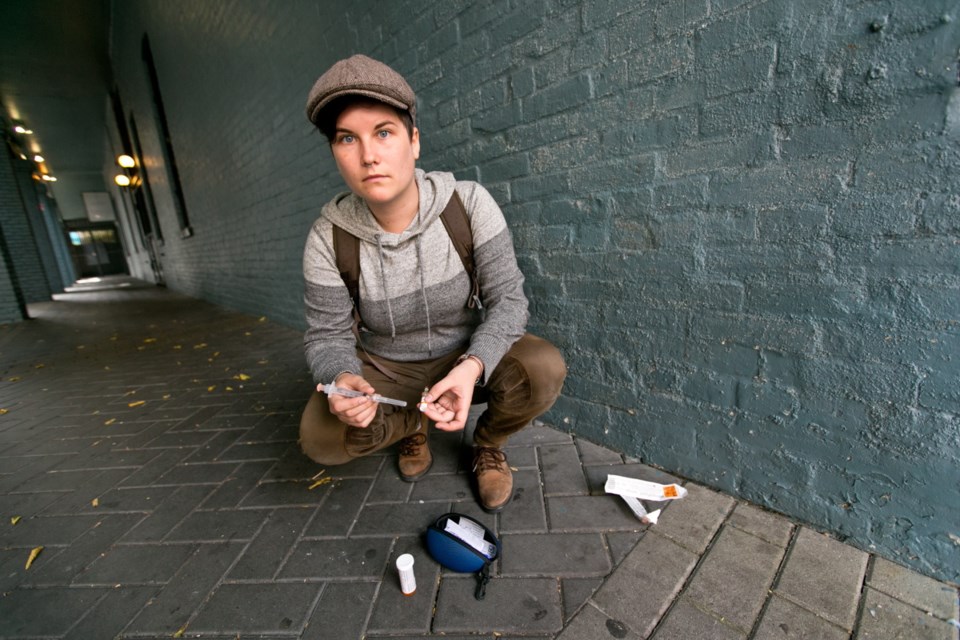Painkillers kill more than pain. They kill people who overdose on opioids ranging from morphine to oxycodone, the codeine in Tylenol 3 and the synthetic opioid fentanyl.
Even as Health Canada debates whether to undertake an 18-month review of access to the overdose antidote called naloxone — without a doctor’s prescription — Victoria health-care providers are stepping up training for those who want to learn how to inject the life-saving drug.
Between 2013 and 2015, AIDS Vancouver Island trained 480 people in the use of naloxone, said programs director Kristen Kvakic. In partnership with the B.C. Centre for Disease Control and Cool Aid Community Health Centre, 170 kits and 58 replacement kits containing the drug and syringes were distributed.
“At AVI, our overdose-response protocol, which includes the use of naloxone, has saved seven lives,” Kvakic said.
Even jabbed through clothing into the buttocks or thighs of a person whose respiration is failing through overdose, naloxone can restore normal breathing, said street nurse practitioner Nancy Wright of 713 Outreach Team, based at Cool Aid Community Health Centre at 713 Johnson St. Kits with naloxone aren’t just for street-linked drug users, however, she said. Suburbanites might be wise to have a kit, too, as drug use and overdose affects all levels of society.
B.C. Ambulance paramedics are using naloxone significantly more in Victoria, View Royal, Esquimalt and Oak Bay this year than the past few years, according to statistics from the Provincial Health Services Authority.
From 2011 to 2014, naloxone was used about 100 times per year. But in the first seven months of 2015, there have already been 93 administrations.
“The overdoses are so common and it’s a quick and easy tool,” said street nurse Sage Thomas, a member of the 713 team. Naloxone is also “100 per cent safe,” she said, meaning it doesn’t harm the recipient or give them another kind of high.
Thomas was trained a couple of months ago and is in the process of training some of the 55 clients on her nursing caseload. One-on-one training takes 10 minutes to an hour, depending on the person. Then users get their own kit, worth about $30, at no charge.
B.C. public health officials recommend that naloxone be available behind pharmacy counters without prescriptions. The B.C. Health Ministry has distributed about 2,500 no-cost naloxone kits to people who use opioids since 2012. More than 4,000 people have been trained to administer naloxone, including users, friends and families and health-service providers, and more than 250 overdoses have been reversed, the minister of Health says.
Given the widespread use of fentanyl — implicated in close to 1,700 deaths in Canada between 2009-2014, according to the Canadian Centre on Substance Abuse — AVI has stepped up efforts for overdose-response training, Kvakic said.
Our Place has been working to get naloxone on site. Now that street nurses will be coming to its medical room on Fridays, it’s likely to happen. “You need to be associated with a medical facility in order to get access to the drug, and then you take the training,” said Our Place communications director Grant McKenzie. “As soon as we know if or when we can have the drug available in our building, then we will definitely be training all of our front-line staff, including hygiene, outreach and housing.”
Kvakic said AVI works hard to engage drug users and others in recognizing and responding to overdoses. “And we will continue to advocate for the widespread distribution of naloxone,” Kvakic said.



